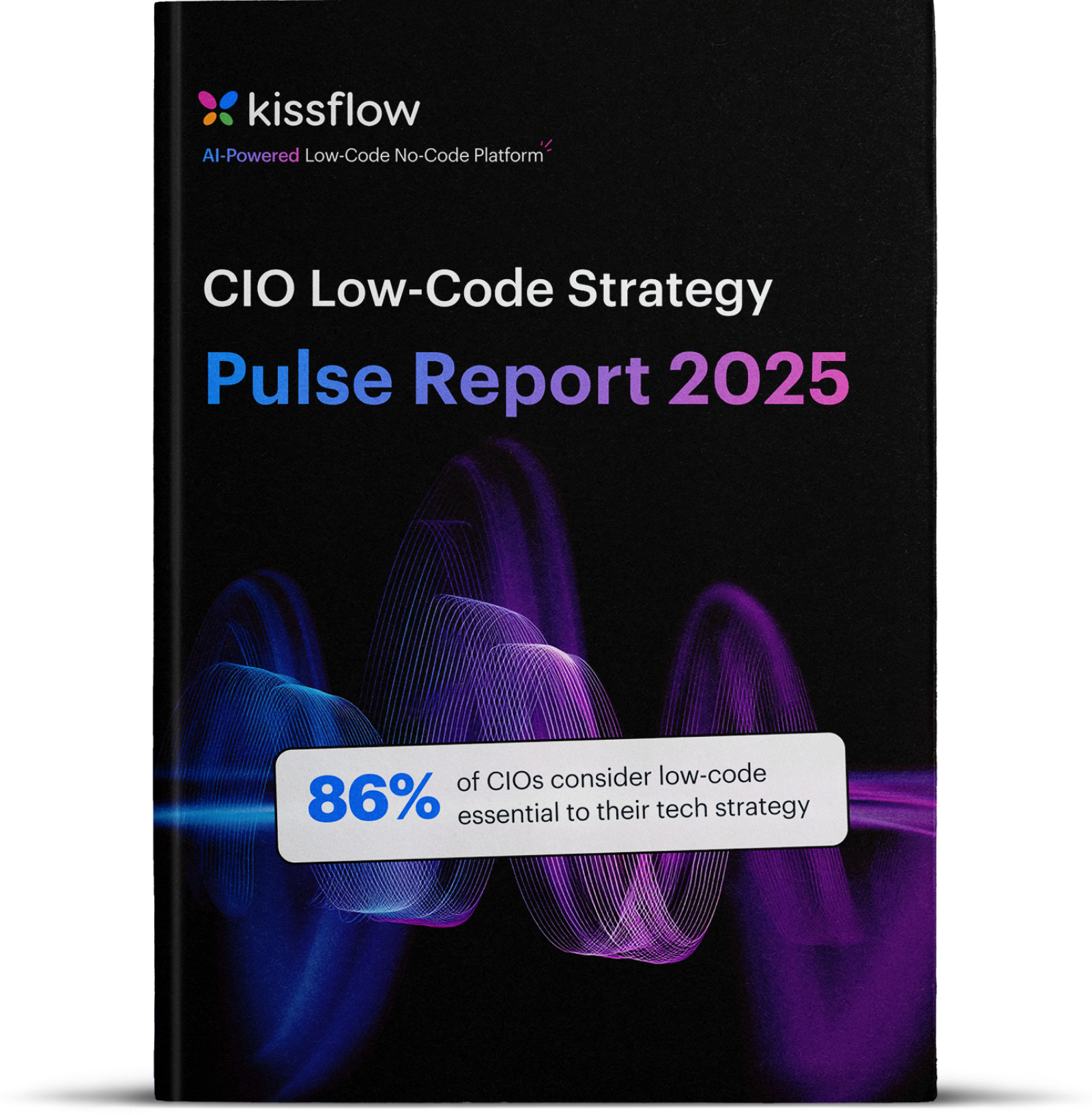
Measuring ROI of No-Code Projects: Metrics You Should Track
Your finance team wants numbers. Your leadership wants proof. Your IT department wants justification. Everyone wants to know: what's the actual return on this no-code investment?
The challenge is that no-code projects deliver value across multiple dimensions. Direct cost savings represent just one piece. Time compression, capability expansion, and risk reduction matter equally but are measured differently.
What is the ROI of no-code platforms?
Let's start with the straightforward numbers. Organizations using low-code platforms saw 50 percent reduction in development costs. A project that would cost $200,000 with traditional development costs $100,000 with no-code. That's $100,000 in direct savings.
But the calculation goes deeper. Traditional development has a longer timeline. Six months to delivery means six months of opportunity cost. The business capabilities you need aren't available for half a year. Revenue opportunities wait. Efficiency gains delay. Competitive advantages postpone.
No-code projects typically deliver in weeks rather than months. That time compression accelerates value realization. If a solution generates $50,000 monthly in efficiency gains or revenue, delivering four months earlier adds $200,000 in value beyond the development cost savings.
Maintenance costs drop significantly. No-code platforms handle infrastructure, security patches, and platform updates. Your team focuses on business logic rather than technical maintenance. Organizations report ongoing cost reductions of 30-40 percent compared to traditional application maintenance.
Resource allocation improves. Rather than dedicating developer time to every business application request, no-code frees technical resources for high-value work. Your developers focus on differentiated capabilities while business teams handle operational applications. The opportunity cost savings here can be substantial.
No-code cost savings calculation
Build a complete financial model that captures all relevant costs and benefits. Start with development costs. Compare quotes for traditional development against no-code platform subscriptions plus implementation time. Include both direct costs and fully loaded labor rates.
Factor in timeline differences. Calculate the value of earlier delivery based on what the solution enables. Revenue improvements, cost reductions, or efficiency gains all have monthly value. Multiply that monthly value by the number of months you accelerate delivery.
Maintenance should be modeled over the solution's expected lifetime, typically three to five years. Traditional applications require ongoing developer time for updates, patches, and enhancements. No-code platforms reduce this to configuration changes that business users can handle. Calculate annual maintenance cost differences across the lifetime.
Risk costs matter, but challenge quantification. Traditional development projects have higher failure rates. Requirements change mid-project. Delivered solutions don't match actual needs. Budget overruns occur frequently. No-code's iterative approach with rapid feedback loops reduces these risks. Assign probability values to risk scenarios and factor them into your model.
Scalability impacts long-term costs. Solutions that work at the current scale but require complete rebuilds as volumes grow have hidden costs. No-code platforms designed for scale grow gracefully, avoiding expensive rebuilds. Model volume growth and associated costs under both approaches.
How to measure no-code project success
Financial ROI represents just one success dimension. Operational metrics reveal how solutions actually perform in practice.
Time-to-value measures how quickly solutions deliver intended benefits. Track from project kickoff to measurable impact. No-code projects should show dramatically shorter time-to-value than traditional approaches. If they don't, something's wrong with your implementation approach.
User adoption indicates whether solutions actually solve problems. High adoption means you built something people find valuable. Low adoption suggests misalignment between what you built and what users need. Track active user counts, session frequency, and engagement depth.
Business process improvements provide concrete evidence of value. If you automate an approval process, measure cycle time before and after. If you built a data collection system, measure data quality and completeness improvements. If you created a customer portal, track support ticket reductions.
Iteration speed shows solution adaptability. One of no-code's key advantages is rapid iteration based on user feedback. Measure how quickly you can implement enhancement requests. Faster iteration means better alignment with evolving business needs.
Business user empowerment tracks whether you're actually achieving citizen development goals. How many business users can modify solutions without IT involvement? How much of the total development capacity comes from business teams versus IT? These metrics reveal whether you're democratizing development or just using different tools.
Business case no-code platforms
Building compelling business cases requires addressing stakeholder concerns systematically. Finance wants clear payback periods and positive NPV. IT wants assurance about security, scalability, and integration. Business teams want confirmation that solutions will actually work for their needs.
Start with a specific problem and quantify current state costs. Manual processes consume staff time and calculate labor costs. Error rates in current processes create rework, measure those costs. Delayed information access slows decisions, estimates opportunity costs.
Project future state improvements realistically. Don't claim 90 percent improvements unless you have evidence supporting those numbers. Conservative estimates with clear assumptions build more credibility than optimistic projections.
Include qualitative benefits even when quantification is difficult. Improved employee satisfaction, better customer experience, or enhanced agility all matter. Describe these impacts clearly, even when precise dollar values are elusive.
Address risks transparently. Platform vendor dependency, potential skill gaps, and integration challenges represent real concerns. Acknowledge them and explain mitigation strategies. Credibility comes from balanced analysis, not sales pitches.
No-code productivity increase metrics
Productivity improvements manifest across several dimensions. Development velocity measures how much faster teams build solutions. Compare story points, feature counts, or project timelines between no-code and traditional approaches. Many organizations report 3-10x productivity improvements for typical business applications.
Business user productivity shows whether solutions actually help people work more efficiently. Time savings per transaction, process cycle time reductions, or error rate decreases all indicate productivity gains. Connect these improvements to headcount requirements or capacity increases.
IT team productivity improves when routine application requests no longer consume developer time. Measure ticket resolution rates, project delivery throughput, or technical debt reduction as indicators of improved IT productivity.
The compound effects matter most. Each successful no-code project builds organizational capability and confidence. Teams become more willing to tackle processes they previously accepted as unchangeable. This cultural shift toward continuous improvement delivers value far beyond individual project ROI.
How Kissflow helps
Top no-code companies for ROI measurement provide tools and platforms that can help you evaluate the success of your digital transformation.
Kissflow's analytics and reporting capabilities make ROI measurement practical rather than theoretical. Built-in process metrics track cycle times, bottlenecks, and throughput automatically. You're not manually collecting data to prove value. The platform generates it as part of normal operation.
The governance features provide audit trails that satisfy compliance requirements while demonstrating process improvements. Before-and-after comparisons show exactly how automation impacted process performance.
For organizations building business cases for no-code adoption, Kissflow's industry benchmarks and case studies provide realistic comparison points. You're not guessing at potential improvements. You're referencing documented results from similar organizations.
FAQs:
1: What ROI metrics matter most for no-code in mid-enterprise companies?
Priority metrics include: (1) Development cost reduction - comparing no-code project costs vs traditional development or external vendors (target: 50-70% savings), (2) Time-to-market acceleration - measuring weeks saved delivering business capabilities (target: 60-80% faster), (3) Productivity gains - hours saved per week through process automation (quantify across all automated workflows), (4) Application portfolio growth - number of new applications/workflows deployed (shows capability to innovate), (5) IT backlog reduction - percentage decrease in pending IT requests as business self-serves, (6) Employee satisfaction - surveying users on empowerment, frustration reduction, job satisfaction, (7) Revenue impact - tracking revenue from faster feature launches, improved customer experiences, (8) Cost avoidance - external vendor costs, overtime, and manual processing costs eliminated, (9) Risk reduction - fewer errors, improved compliance, reduced audit findings, and (10) Platform adoption - active users, applications built, demonstrating value realization across organization.
2: How do we calculate cost savings compared to traditional development?
Comprehensive calculation includes: (1) Development labor - traditional developer cost ($100-150/hour) vs citizen developer cost ($40-60/hour) multiplied by time saved (typically 60-80% reduction), (2) External vendor costs - comparing previous outsourcing expenses vs internal no-code development, (3) Maintenance costs - traditional apps requiring ongoing developer time vs no-code platform subscription covering updates, (4) Infrastructure costs - reduced hosting, DevOps, and infrastructure management compared to custom code, (5) Licensing savings - consolidated functionality reducing need for multiple niche software licenses, (6) Operational efficiency - quantifying hours saved through automation (employees/hour saved/average loaded labor rate), (7) Error reduction - calculating cost of mistakes prevented through automated validation and workflows, (8) Opportunity cost - value of IT resources freed to work on strategic initiatives, and (9) Hidden costs avoided - security patches, compliance updates, technology obsolescence handled by platform. Total 3-year ROI typically ranges from 250-400% for mid-enterprise deployments.
3: How quickly can no-code platforms deliver measurable outcomes?
Timeline for results: (1) Quick wins (30-60 days) - simple form digitization and approval automation saving 50-100 hours/month immediately demonstrable, (2) Departmental apps (60-120 days) - custom applications for HR, procurement, IT showing measurable productivity improvements, (3) Process transformation (4-6 months) - significant workflows redesigned and automated with substantial cost savings and efficiency gains, (4) Enterprise-scale impact (9-12 months) - portfolio of 20-50+ applications with measurable ROI across multiple departments, and (5) Cultural transformation (12-24 months) - innovation embedded in organization with continuous value delivery. Best practice: establish quick win projects first to build momentum and demonstrate value before tackling complex initiatives. Measure and communicate early wins to secure ongoing support and investment.
4: What KPIs prove value to IT leadership and CFOs?
Executive-level KPIs include: (1) Total Cost of Ownership (TCO) - platform costs vs traditional development infrastructure, licensing, and labor over 3 years, (2) Return on Investment (ROI) - (total value delivered - total investment) / total investment as percentage and payback period, (3) Business capability delivery rate - number of new features/applications per quarter (velocity), (4) IT resource optimization - percentage of IT capacity freed from routine development for strategic initiatives, (5) Shadow IT reduction - decrease in unsanctioned cloud services and spreadsheet-based processes, (6) Technical debt reduction - legacy systems decommissioned, maintenance burden decreased, (7) Innovation pipeline conversion - ratio of ideas to implemented solutions (measures execution capability), (8) Compliance and risk metrics - audit findings, security incidents, policy violations (should decrease), (9) Business stakeholder satisfaction - NPS scores from business leaders on IT responsiveness and solution quality, and (10) Platform utilization - active users, application usage trends showing sustained adoption. Present quarterly with trend analysis and comparisons to initial projections.
5: How do we track app adoption and workflow efficiency gains?
Comprehensive tracking through: (1) Usage analytics - daily/monthly active users, session frequency, feature utilization rates per application, (2) Workflow metrics - average completion time, bottleneck identification, abandonment rates at each step, (3) SLA compliance - percentage of processes completed within target timeframes, (4) User behavior analysis - heat maps showing where users spend time, identifying friction points, (5) Before/after comparisons - measuring time, cost, error rates pre- and post-automation implementation, (6) User feedback - in-app surveys, usability testing, suggestion tracking to identify improvement opportunities, (7) Business outcome tracking - connecting application usage to business KPIs (sales cycle time, customer satisfaction scores, employee retention), (8) Adoption curve monitoring - tracking user onboarding and sustained usage over time to identify training needs, (9) Comparative analysis - benchmarking application performance against similar processes or industry standards, and (10) Continuous improvement metrics - number of enhancements deployed based on user feedback, showing iterative value delivery. Build dashboards making this data visible to stakeholders, enabling data-driven optimization decisions.
Build data-driven business cases for your no-code initiatives with clear metrics.
Related Topics:
Related Articles











